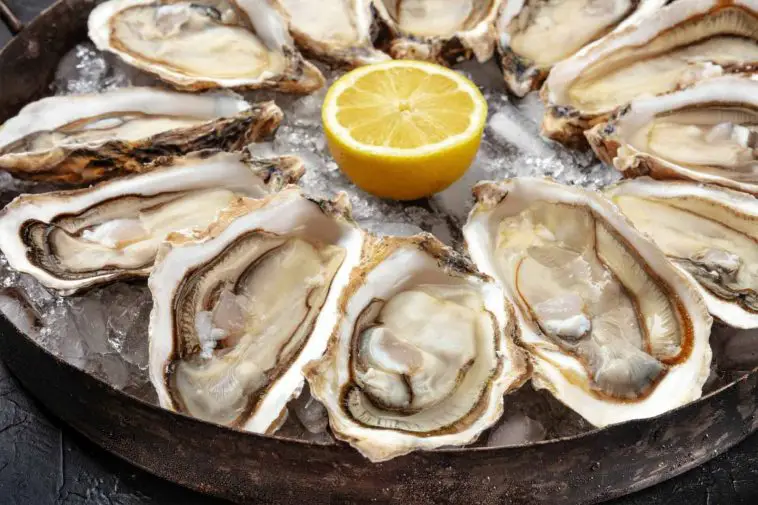Oyster road trips offer a unique blend of culinary adventure and scenic travel. For seafood enthusiasts and explorers alike, these journeys promise an exploration into the diverse world of oysters, set against the backdrop of picturesque coastal landscapes. This article will guide you through the essentials of planning an oyster road trip, from selecting the best time of year and regions renowned for their oysters, to tips on mapping your route and finding the perfect accommodations. Prepare to embark on a journey that tantalizes your taste buds and feeds your wanderlust.
Planning Your Oyster Road Trip
Essential Considerations
When planning your oyster road trip, two primary factors need consideration:
- Time of Year: The ideal time for an oyster road trip largely depends on the region. Traditionally, months with an “R” (September through April) are considered the best for oyster harvesting due to cooler water temperatures. However, thanks to modern aquaculture techniques, many regions now offer quality oysters year-round.
- Regions Famous for Oysters: The United States boasts several oyster hotspots. The East Coast features destinations like Chesapeake Bay and Cape Cod, known for their unique oyster varieties. The West Coast, especially the Pacific Northwest, offers a different oyster profile with its cold, nutrient-rich waters. The Gulf Coast, including areas in Louisiana and Florida, is renowned for its robust and flavorful oysters.
Route and Accommodations
- Mapping Your Route: Consider the oyster trails or festivals happening in different regions. Coastal drives can offer stunning views and direct access to local oyster farms and restaurants.
- Accommodations: Look for stays that offer easy access to oyster experiences. Many coastal towns have boutique hotels or B&Bs that can provide a more intimate and local experience.
- Local Experiences: Engage with local oyster farmers and experts. Many regions offer farm tours and oyster shucking classes, enhancing your understanding and appreciation of this delicacy.
Planning your oyster road trip requires a balance of culinary interest, travel logistics, and a desire for adventure. By considering these factors, you’re well on your way to creating an unforgettable journey through some of the best oyster regions in the country.
For more insights into sustainable seafood practices, which are crucial when selecting oyster destinations, visit Monterey Bay Aquarium Seafood Watch.
East Coast Oyster Destinations
The East Coast is a haven for oyster aficionados, with Chesapeake Bay and Cape Cod as standout destinations. Chesapeake Bay is renowned for its large, succulent oysters, best enjoyed in the cooler months from September to April. The Bay’s oysters have a unique sweetness, complemented by a mild saltiness. On the other hand, Cape Cod’s oysters are smaller but pack a briny punch, reflecting the Atlantic’s crispness. The Wellfleet OysterFest in October is an ideal time to visit, offering not just fresh oysters but also a deep dive into the local oyster culture. Each East Coast location offers its unique oyster varieties, making it an exciting journey for those seeking diverse flavors and experiences.
West Coast Oyster Havens
The West Coast, especially the Pacific Northwest, is an oyster paradise. The cold, nutrient-rich waters here produce some of the finest oysters, known for their clean and crisp taste. The Pacific Northwest Oyster Trail is a must-visit, with stops like Tomales Bay in California and Washington State’s Puget Sound. These areas are home to renowned oyster farms like Taylor Shellfish Farms, offering tours and tastings for a hands-on experience in oyster harvesting. Spring and summer are the best times to visit, aligning with the region’s oyster festivals, where various oysters are showcased, and local experts share their knowledge.
The Gulf Coast’s Hidden Gems
The Gulf Coast, particularly in Louisiana and Florida, offers some of the most underrated yet flavorful oyster spots. The warm Gulf waters yield large, meaty oysters with a robust flavor. Louisiana’s oyster bars and dishes in New Orleans highlight the region’s rich culinary tradition. Florida’s Apalachicola Bay is known for its large, buttery oysters. The cultural and culinary significance of Gulf oysters is celebrated through numerous local oyster bars and festivals. The cooler months, from November to April, are the best time to visit for the freshest oysters.
Oyster Tasting and Experiences
Oyster tasting is an art, offering a sensory journey through various textures and flavors. When tasting, observe the oyster’s color and texture, and inhale its fresh, oceanic scent. Each oyster’s flavor profile, from briny to sweet, reflects its environment. To fully appreciate different varieties, cleanse your palate between tastings and try them both raw and cooked. Many coastal regions offer oyster shucking classes and farm tours, enhancing the tasting experience with knowledge about oyster cultivation and preparation.
Sustainable Oyster Farming and Conservation
FAQs
What is the best time of year for an oyster road trip?
The ideal time for an oyster road trip varies by region. Traditionally, months with an “R” (September through April) are preferred due to cooler water temperatures, which are conducive to oyster quality. However, thanks to modern aquaculture, many regions now offer excellent oysters year-round.
How can I identify fresh oysters?
Fresh oysters can be identified by:
- Appearance: They should be moist and plump.
- Smell: Look for a clean, briny scent reminiscent of the sea.
- Shell: Closed or slightly open shells that snap shut when tapped indicate freshness.
Are there any health benefits to eating oysters?
Yes, oysters are a nutritional powerhouse. They are:
- Rich in zinc, crucial for immune function.
- A good source of omega-3 fatty acids, beneficial for heart health.
- Contain vitamin B12, iron, and selenium, supporting energy levels and overall wellness.
In conclusion, The Ultimate Road Trip for Oyster Lovers is more than just a gastronomic adventure; it’s a journey through diverse landscapes, cultures, and flavors. Whether you’re an oyster connoisseur or a curious traveler, this trip promises a rich blend of culinary delights, scenic beauty, and sustainable practices.






Comments
Loading…